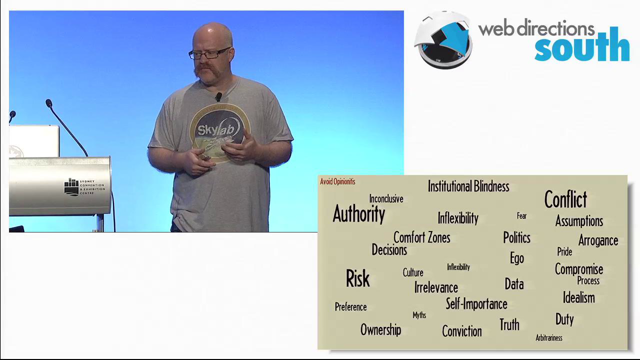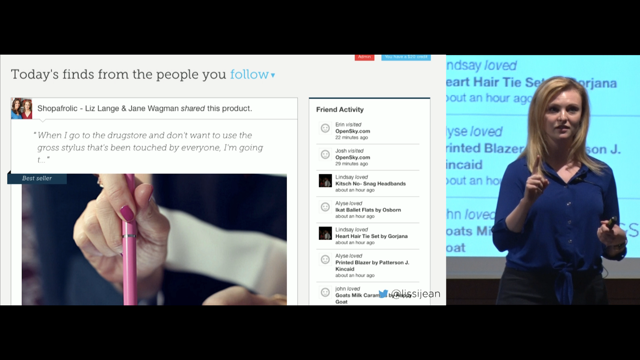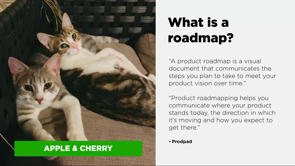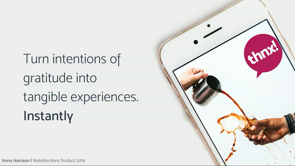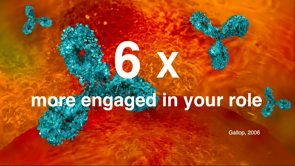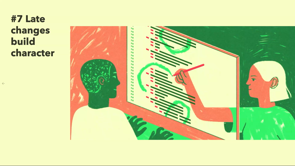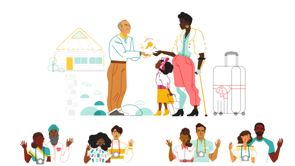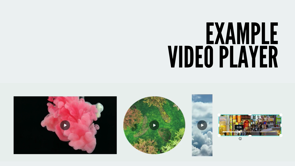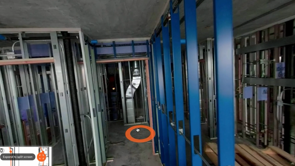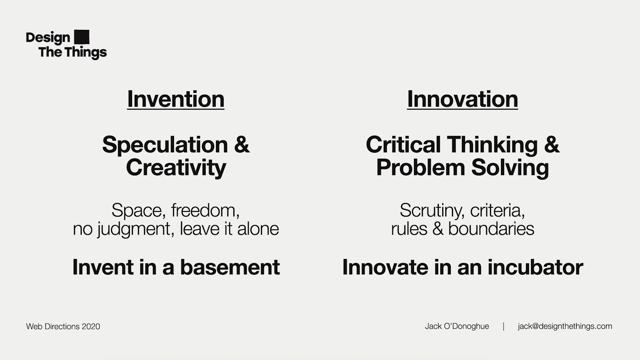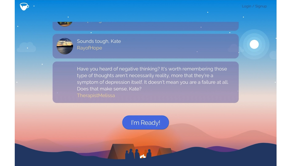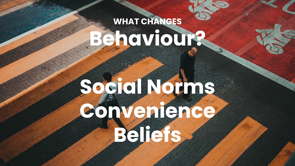What Do We Do Now?
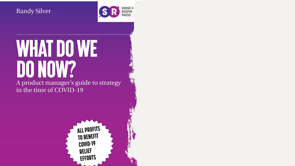
(upbeat music) - Hi, I'm Randy Silver.
Before we get started talking about how to manage your products, your roadmaps, and your strategy. I'd like to just take a moment.
It's been a hell of a year.
I'm recording this a few days after the American Election was called for Joe Biden, and for me, it feels kind of like the first time I've been able to exhale this year.
But this isn't about politics.
Whatever your ideology is, 2020 has been a struggle. And before I go into what I've learned about how to be a product person in this environment, let's just take a moment please, stand up, move about stretch a little.
You've probably been in that chair for too long today. The year's almost over.
Product people are bad at looking back at things. So we have to schedule retrospectives in our diaries. So for now, let's just take a moment to reflect, a moment to think of friends that we've lost, family that we can't see as much as we'd like, and to remember how much we've come through. And if you have been through all of that, and you're listening to me now, be thankful for what you have.
Just take a few deep breaths.
Okay. Thank you.
Thank you for sharing that with me.
So I'm here today to talk about a book that I wrote and released earlier this year.
It's called, "What Do We Do Now?" A product manager's guide to strategy in the time of COVID-19.
I'll start off telling you why I wrote it.
Then I'll give you some of the advice in it, as well as what I've learned since I finished it. So a little bit about me, I get bored easily. I do a lot of things.
Most of which are focused on talking to people and trying to learn new things.
For example, I co-host the product experience podcast with Lily Smith, where we talk to some amazing product people every week.
You might recognise my voice from that, but you know, this is what I look like so hi! For my day job I'm a consultant.
I work with companies on things like leadership and discovery, communication, collaboration, prioritisation, and alignment.
And I also host a regular Virtual Lean Coffee called Product in the (A)ether.
We're a bunch of beautiful nerds chat about whatever's on their mind.
You can join that at pita.social, and I'd love to see you there.
But like I said, mostly structured myself around trying to have great conversations with smart people. And a few months ago, at the beginning of the year, people kept saying the same sort of thing.
I kept hearing familiar refrain people were saying. "COVID is coming. COVID is coming." It was all very Game of Thrones.
And you know, like Game of Thrones, it kind of kept us all on our toes.
And I found myself having similar conversations and giving similar advice and it was really resonating, but the, those conversations were one-on-one and I wanted to do something bigger.
So I sat down to write an article to see what kind of conversation I could start on wider scale, but the article wouldn't stop. It just got longer and longer.
So I sent a short pitch to Jeff Gothelf and Josh Seiden and I sent it to them because they are two of the smartest students I know, but they also run sense and respond press.
And then entire ethos of their press is short books that you can read over lunch.
And I figured, if what I had to say was worth saying then A they didn't know it pretty quickly.
And B they're the kind of guys who could turn around and publish something really quickly.
And they also might just go along with the idea I had, which was spit all the proceeds to charity. And they said, yes, which meant that I tried to write the thing.
And the first draught was done quickly.
We did some edits and we got it out as soon as possible. And it's now available everywhere.
It's a $5 in the US, it's about four pound 60 in the UK. And I'm not sure exactly what that is in Australia, but it's still cheap and all the profits are going to medicines on frontier or doctors without borders.
So I'm going to encourage everyone to buy it. And the dirty secret is, well, two dirty secrets actually one is it's not just for product managers. It's for everyone who gets involved in strategy prioritisation.
The other dirty secret is that it really doesn't have anything to do with COVID, because we live in a world of disruption.
And this is the kind of thing that happens to us all the time.
So everything I talk about in this talk and in this book is relevant to you regardless of the situation. But enough about why I wrote it.
You're here because you want to know what do we do now? Well, in the beginning, we start at the basics and the basics are important.
Basics are things that we do all the time.
We go back to basics because we're unsure of the foundations that our strategy is built on. So let's talk a little bit about what strategy is. It's a few basic things.
It's about understanding the problem that understand the customer and the market.
And it's about understanding how you propose to help your customer solve that problem better than anyone else can.
We do this all the time.
We use the double diamond and we ask, are we solving the right problem? Are we solving the problem right? And we have a lot of tools that we use at this stage, but it comes down to these very few basics. Things that often get overlooked when we're not at that early stage of a product development process. And that's what we need to go back to.
So let's take a quick look at those things. Starts with customers.
Who are we trying to help? What are their goals and obstacles? And is their perception of those goals and obstacles. You have personas, right? Personas where we go back and look at our customers from a few different lenses, we try and understand things like what is their current situation and how might that be different from their previous situation? What relevant habits might be affected or changed by the situation that we're going through right now? The hardest thing in the world to change somebody's habits, but they've been massively affected by things like being forced to stay at home, not being able to socialise, not being able to do all the things that they want to do.
I mean, look at this, I should be with you right now in person and we should be grabbing a beer as soon as this is done, but I can't be, I'm here and then you're where you are.
So if you do change something for your customer, you also have to think about, are they in a position to use it? Jobs to be done is really great for this.
You can look at the jobs and all the potential jobs that your product might solve for somebody and then refine as per the situation.
And there's a lot of examples.
There's things like auto insurance companies we're giving money back to people because they weren't driving as much.
Breweries were pivoted to making hand sanitizers. Local shops near me started doing weekly deliveries and baskets and things that they never did before. Intercom added a free tier for non-profits. And there were a lot of things that happened in the collaboration space.
And it's absolutely incredible how much companies were able to change really, really quickly. Which goes to the next point.
You also have to look at the market.
It's not only about your customers, it's about your place in the market.
And you know, no one predicted this situation, no one planned for it.
And if you think you know where we're going to be in a year's time, I want your crystal ball. At the beginning of COVID, we are, we were able to predict a disaster.
And we've certainly had that.
There's been huge losses of life.
Entire industries are in deep trouble.
Lots of us have lost our jobs.
But there's also, in any crisis, in any disruption, massive opportunities.
We already said the hardest thing in the world to change is people's habits.
But when something comes in and changes them for you, you have to look at how you can take advantage of that situation.
When we start working on a new product, we take a look at the gaps in the market.
What are the opportunities? And they could be space-based on any number of things. It could be on price, it could be on quality, on availability, on features, on usability. You can distinguish yourself in a whole bunch of different ways.
And then we look at the players and we map out what we can offer that will make a difference. But you know, any work that you did in this space, more than a few months ago, needs to be revalidated. Who's going out of business, who's getting acquired, who's got cash reserves, what's changing, and who's getting bailed out.
We all want to build a defensible moat around our advantages.
Take a look at your competition.
Who's moat is now crossable.
What assumptions about the market is your positioning, your roadmap, your release plan built on.
There's some good models for working in this space two that I can recommend are Scenario Planning and Wardley Mapping.
I talk a bit about them in the book, but there's a lot of good resources about both of these techniques online.
So once you've put that together, once you've looked at your personas and at the marketplace, that's when you tie that together and you create a roadmap. Roadmaps are where we put it all together into a story, that's really all that a roadmap is.
It's a story to get everyone aligned and focused on the same priorities.
But 2020 did a job on our roadmaps, but they kind of did this to us.
So we, I didn't go on as, before we need to reprioritize, we need to redraw our roadmap.
But before we do that, there's a couple of basic questions that we really want to ask.
First thing is, can you do anything that helps right now? And there's no right answer to that question. Could be yes, could be no, it could be something for people in the public, it could be something for people in your company.
Interpreted as you will, make sure you do ask the question anytime you're facing a disruption or crisis as a company.
So is everyone around you.
The people work with you, and the people who are your customers and in your community. The other question to ask is, can you change pace quickly? What's your release cycle like? Are you up to it? Are you doing continuous integration and continuous deployment? Or do you have annual release cycles? Do you have the muscles, the procedures, the process, to be able to change that quickly? You know, grocery stores have tech systems that scale, but logistics that can't.
They only have so many delivery slots.
Early on in the crisis, they were not able to cope with the demand.
They weren't able to take advantage of it.
Of the fact that so many customers wanted to go from in-store shopping to online for the first time. Normally, if they were able to take advantage of it, that would have been an incredible acquisition opportunity.
And as a result, the cause they couldn't scale, it was a little disappointing.
They weren't able to do everything that they wanted to do. So it's only when you've gone through all that. When you've looked at what are the opportunities around you that you should actually do that prioritisation exercise.
And let's get the terminology right about strategy, words matter and product people speak and communicate in words and it's our job to tell stories using words but if we don't get it straight, and everyone else doesn't understand us, well, then there's a little bit of a problem. So we talked about customer personas.
That's really important.
And we talked about market analysis.
That's really important.
I think we understand what those are, but we put those things together and we make a series of bets, but that's really all that roadmap is, it's a series of hypotheses which then get prioritised.
But hypothesis, that's tricky one.
Because a hypothesis has made up of two things. It's a fact, we know this plus an assumption. We think this will happen, if we do something, right? That's the experiment we're going to run, but this is where it gets tricky.
Assumptions are made up of a couple of different things. An assumption, plus an emotion equals an opinion and opinions are nasty little buggers, because opinions are impervious to facts.
And if you want to test something and the person you're testing it with doesn't care about the results and isn't going to change their mind, well, what's the point of the experiment in the first place.
So make sure you know, what you're dealing with. Are you dealing with a hypothesis with an assumption or an opinion.
But assuming you're not dealing with opinions, assuming you know how to deal with opinions potentially, then there's a whole bunch of things that we can do to try and figure out what to do next and how do we put together our strategy and our roadmap.
And use one of these there's Assumptions Mapping and Impact Mapping and Theory of Change or even Dragon Mapping.
That last one is one I've made up.
It's a combination of things like the opportunity, solution, tree Impact Mapping, and the five whys.
And it's actually really simple, I'll spend just a couple of seconds on it.
It's basically you say here's our goal, and for this to happen, what has to be true? And then you do it again and again and again, and you map out all these things and understand for each thing there, is that a fact, or is that an assumption? And if it's an assumption, test it.
And if it's an opinion, manage it.
Once you've got all this together and you've gotten done your prioritisation exercise, then you have to start working on the future. You have to put on your psychics hat and look in the crystal ball.
Didn't realise that was part of the job description. Every product person actually has to be part psychic. The reason for that, is because everyone is always asking you, when can I have it? You have to be able to predict the future, but we can't predict the future right now.
We never could really predict the future, but we liked to pretend.
And we did that based on priors.
We knew how much our team was able to produce. We knew what was working and what was not working. And we went forward based on that.
But now, now things are different, because things are not fine.
You know, it's not the new normal.
I know we stopped using the terminology a long time ago. It's not working from home.
We know that, but it is working in very very different circumstances.
And continually, we have to ask questions like, who is available, how available are they based on this living situation they're in and what their family's up to, what tools do they not have because they're not in the environment that they used to be in. And what kind of access do you have to your customers? And workspace you know, we romanticise it, it wasn't all good being in the office, not by a long shot.
And you know, there are good things like we don't have to commute anymore, but you know, actually there's the flip side of that is it's bad for decompressing.
I finished the workday and I just closed the office store. And I don't have any time to decompress before I'm with my family again, it's a totally different psychic load.
And things aren't really different.
We don't have ambient awareness of what's going on in the company and with our coworkers.
We have to manufacture those things.
And we have to think about how we're going to use workspaces differently when we can, if we can go back into the office anytime soon.
So we have to make, do we first have to take care of ourselves at home and make sure that you're paying attention to your office space.
Lots of companies have done investment in this. They've changed their investment.
If they're not gonna be spending as much money on offices, or on certain types of benefits, they've actually given money to employees to upgrade their situation, to make sure they have a decent desk, a decent chair, a good monitor, decent wifi.
And this can be tough for a lot of us.
Not everyone has the space for this.
I actually know the guy who has this office space and mine is not as pretty as his, but you know, we all have something that we can aspire to. And something else that's really important is how you manage your day.
You have to think about, do you need that meeting? If you know who this is, if you knew who Marie Kondo is, there's the philosophy of taking an object, holding it in your hands and asking, does this spark joy? And if not, letting go of it, we need to take a look at each meeting.
If we're overburdened, if we're overbooked and say, is this meeting adding value? Can I cut this meeting out entirely? Can I change how often it runs? Can I change who's there? Can I change the format? Can I make it asynchronous? And just a text update. There are lots of things that we potentially can do. And that goes into all of our normal habits about how we work with our teams.
We have to do things that retain social elements. I know companies that has still have team lunches. They get pizza delivered to everyone, and they actually sit down together and have lunch together once in a while. And it's important to think about things like this. We have to plan for the mental wellbeing and the social wellbeing of our teams, but the makeup of our teams is changing as well because if there isn't a central office to commute, to then where are we recruiting from? The war for talent is changing, because now you can hire anyone within a few hours of your time zone, as long as they're willing to time shift and make it convenient for you to meet with them. Talk to them every once in a while, then they can be pretty much anywhere because you're not necessarily meeting centrally or you're not meeting centrally very often. So you can recruit much wider.
It's a lot easier to find talent, but the warning part of this is so can your competitors.
So if you want to compete for talent, if you want to retain the people you have and get the attract the best other talent, you have to have mission.
You have to have purpose.
You have to have clarity.
You can take a company like Simprint, which is an NGO. That's able to compete for talent with the likes of Google and Facebook and things like that because they do have a mission.
They do have a purpose and they do not have the salaries, but they're very intentional in their recruiting process. And they've designed it in such a way that they can successfully recruit incredible talent without the cost.
You have to think about how are you going to do the same. One of the ways to do is make sure you have a good culture, and culture is incredibly important.
It's always been important.
And one of the things we are hopefully leaving behind as we pay attention to culture is this whole idea of presenteeism, that idea of productivity theatre, where you are at your desk and working, or, you know, appearing to be working.
It was always a super power to be able to define an outcome over an output and manage for that. But now, it's an essential superpower.
It's something everyone has to have and your company is just not going to succeed in the same way. You're not going to be able to manage effectively if you're in trying to enforce presenteeism. And finally, the last thing I wanted to talk about in this space, was something I touched on a little bit earlier, but let's come back to it.
It's the idea of deployment cycles and release cycles. There is an urge to pivot and to change how often we release things, but there's some things that you need to make sure of.
Are you ready to do it? Do you have the capabilities in the culture to do it? Because it's not just about getting code into production. It's being on the same page as marketing and sales and support.
And most importantly with your customers.
Just because you're ready to change something, do they have the focus of attention? Do they have the resources to be able to take advantage of it? And are you changing something that's part of their critical infrastructure.
So be aware of what you can do and what your customers are expecting before you go all willy-nilly on changing your development cycles and deployment cycles. Okay. So the last part of this talk is gonna focus on execution.
And I'm not gonna spend much time on this, because execution is a key part of what we do.
But there's one thing that is fundamentally different about working now, which is attention.
You're really competing for people's attention. It is hard to keep them focused.
So you better be able to explain the priority of what you're doing, the value that it confers, like you would to a six-year-old.
If you can't, then it's too complicated.
Do you need to refine your message? If you want to keep everyone aligned and everyone focused on doing the same thing, they may take different nuance from it, but they need to be at the same basic split space.
Right, so let's recap on where we were.
Starting at the beginning, you start with identifying an opportunity space, and that's looking at personas in the market analysis.
You then move on to how are you going to solve that problem for customers? And that's working with bets and assumptions and facts. And finally, how are we going to work on that? And that's taking advantage of your capabilities and reviewing your ways of working.
And the final part, as I said, is the plan, that's execution.
And while I touched on it, there is more in the book and I'm not going to talk about it now, one, because I've talked for too long already, and second, the book is cheap and all the profits go to charity and you should buy it.
Also, obviously I don't have all the answers, no one does. But the important thing is to make sure that we're asking the right questions.
That our teams and our management teams are having the right discussions, because that is the job. That's what we do, is what we should always be doing. That is our superpower.
Make sure that we're questioning our assumptions, redoing the roadmaps, updating our prioritisation and learning all the time.
That more than anything else, is the job of somebody working in product.
Thank you very much for your time.
Please do stay in touch.
You can get in touch with me through all of these things. I hope you listened to the podcast.
And I really hope to see you at a Product in the (A)ether coming up Have a lovely rest of the conference.
(upbeat music)
